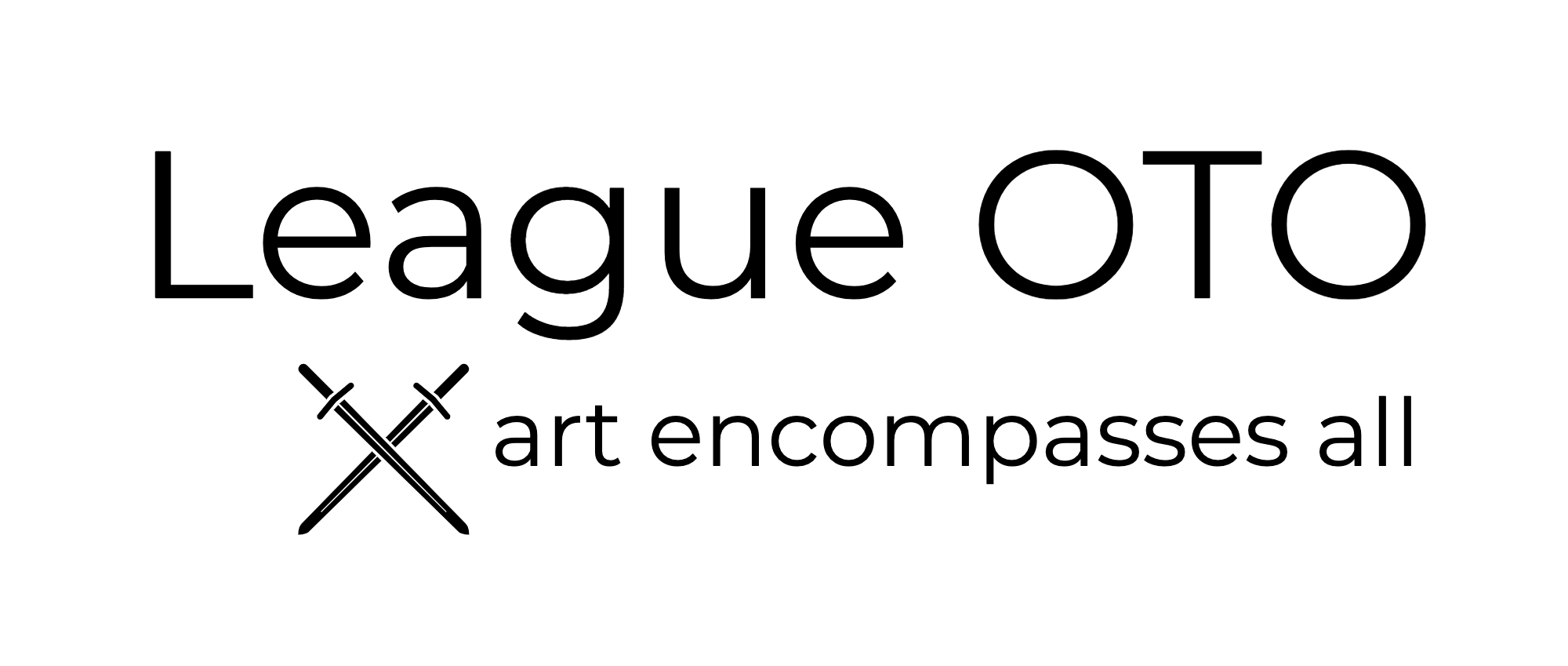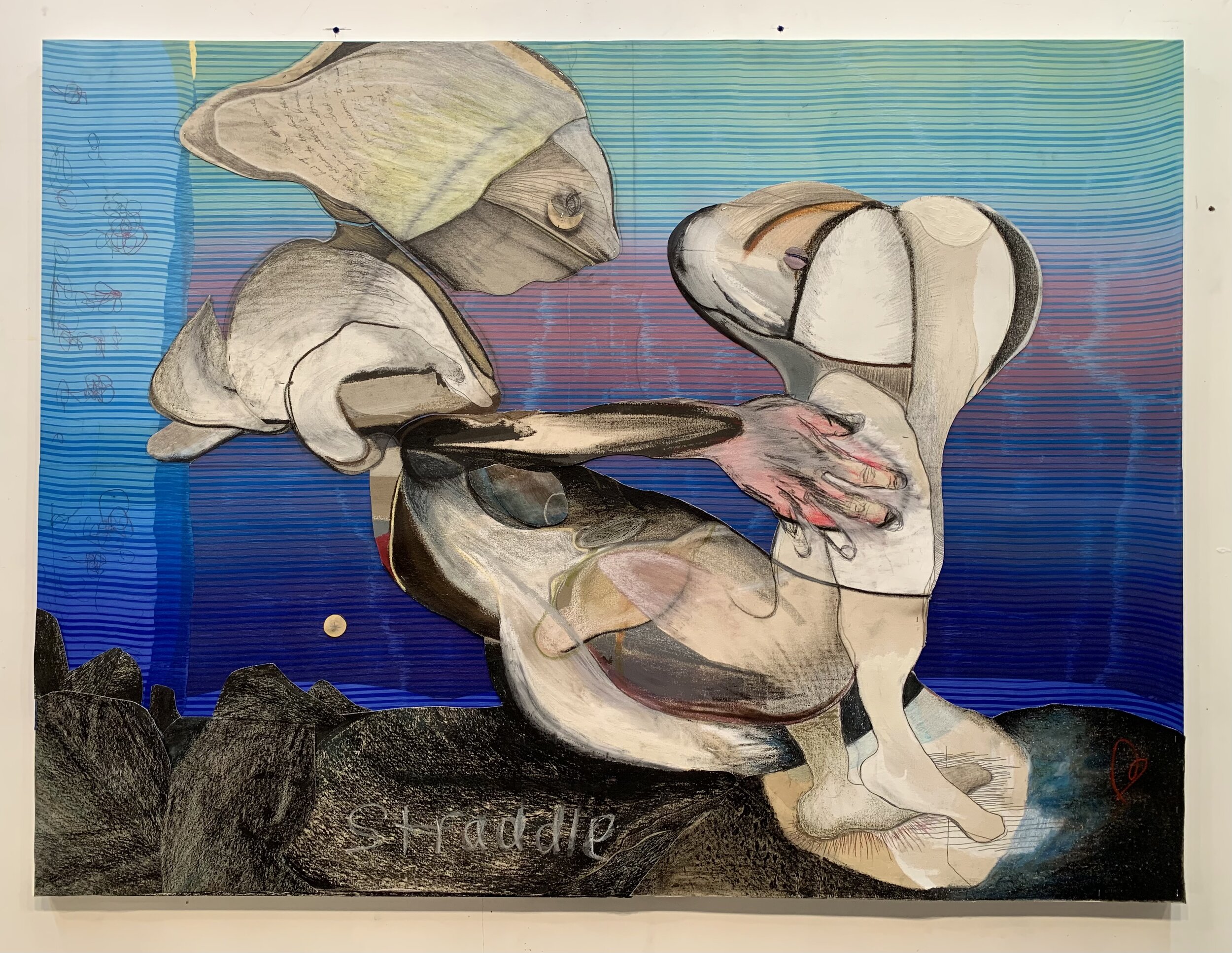RAPID FIRE QUESTIONS WITH ~ DAVID WILLIAMS BY PABLO G. VILLAZAN
We are back with another great session of “Rapid Fire Questions” by - Pablo G. Villazan. Today’s Q&A is with Brooklyn artist, David Williams.
David will be having his new solo exhibition in April with our good friends, Padre Gallery.
So, Ready! Set! Gooooooo!
Who is David Williams?
Artist, living and working in Brooklyn, NY. B. 1984
Did you always want to be an artist?
Definitely not… I grew up in Colorado, and was very into athletics. My grandma was an oil painter, but it was mostly as a hobby. I enjoyed looking at her work, and I actually did do my first oil painting with her; however my family never really immersed me in the arts. As a teen I began drawing and copying portraits from photographs and giving them away as Christmas presents to my family members, but I did not take any art in High School. Honestly, I was a huge jock, like captain of the football team jock. I went on to play football at Oklahoma State University, but that only lasted one year due to injury. I was devastated when football abruptly ended. Athletics, and being on a team, both acted as key parts of my identity growing up. The following year I moved to Hawaii with a dear friend… in some ways to start over. I grew my hair long, bought a skateboard, surfboard, boogie board, and did everything I could never do before because of athletics. Hawaii is where I took my first art class, and when I decided to pursue art. Three years later travelling in Europe seeking out art collections is when I realized I wanted to dedicate my life to art. My family and friends have been a huge support from the very beginning, which I realize is not always the case. I am very fortunate, and grateful for that.
Where does your inspiration come from?
In a nutshell, inspiration comes from experience and process, and the materials used. I don’t necessarily believe that inspiration is the main driving force behind the work of an artist. Rather, for me, it’s more about a necessity to keep your mind, hands, and eyes busy and all working together; which might help understand a myriad of curiosities and questions. Those questions, to me are often about life and death, and the human condition of being alive... and lately, there has been a lot of pondering the inevitability that humans will eventually have to leave Earth.
My hope though, would be that my art and studio practice is not only a vehicle for my own questions, or questioning myself, but can also address larger questions and issues outside of myself; ones that are much more complex than myself. Also, there is almost never a moment in my studio that I am not listening to music. Musical arrangements definitely impact my ideas of repetition, pattern, and rhythm. Lastly, film and T.V. are influences on my palette, composition and storytelling for sure.
Which artists have the greatest influence on your work?
Every young artist has that “light bulb” moment, and for me that occurred with the ABEX painters. I did not understand the wide breadth of art, until I had some understanding of abstraction. The 1860’s ish to the present are the most influential years of art history for me. Studying abroad in Italy during my undergraduate studies and actually observing Italian art history, and architecture in the flesh was also very impactful for me early on.
Over time though, I think the more artists you are aware of, the more you go looking for those particular artists, as you need them. For example, if I’m thinking about something complex conceptually and I don’t quite understand it, I might turn to Malevich, David Lynch, Alan Kaprow. or Paul McCarthy… if I’m thinking about the human form acting as a compositional device: George Condo, Picasso, Francis Bacon, Degas, Nicole Eisenman, Dana Schutz, etc. If I’m kind of stuck I might listen to Kiki Smith, Sean Scully, or Tal R talk in beautiful circles about their practice for over an hour… If I’m thinking about hands I might look at Alice Neel… it just depends, and that list could go on and on obviously.
There are also a number of artists whose work I’ve seen in person quite a lot, and think about often, but for whatever reason I can never remember their names. Their pictures, and surfaces are etched into my brain, but when they come to mind I can’t even Google them, haha! Those sometimes are the most important, because you can play around with their work in your own mind from memory. Sigmar Polke, Francis Picabia, Kara Walker, Jenny Saville, and Max Beckmann are a few in that group.
I’ve really been making the effort lately to take advantage of the galleries as well as the museums here in New York City. And when you have that convenient access to these wonderful institutions it allows you to focus on only a few pictures each visit. Maybe stay for an hour and leave. Two weeks ago I went to the Met and spent nearly an hour in front of Pollock’s “Autumn Rhythm, Number 30”. Last week I returned to the Met and did the same thing with “The Actor” by Picasso. Every single time I do these things, which is often and sometimes random, I get something unexpected out of it… some little beautiful nugget that I make note of. Currently, I’m reading an essay on Romare Bearden, and his use and fascination throughout his career with the conjure woman. It’s great! Also, performance artist Ragnar Kjartansson’s “The Visitors” and the band Salem’s music videos to their most recent project are breathtakingly beautiful; they kind of say it all.
What is your process to create your work?
I’m a firm believer in work makes work, and work makes thought. Thought doesn’t always make interesting work. If one has an idea or a theory about something and sets out to make some pictures, or sculpture, etc., surrounding those thoughts… that idea will inevitably and SHOULD mutate and morph during that process. Eventually, that idea is a new version of it-self entirely; or at least hopefully has somehow presented a more resolved understanding for the maker. But, no conclusions, or preconceived pictorial depictions can be made until after that idea has evolved. One image might lead to the next in my studio, but I do not plan anything ahead of time. I do not have a sketchbook of paintings to come, that sort of thing doesn’t interest me in the slightest. I learn through making.
Is there something you can’t live without in your studio?
With collage being an important aspect to my studio practice I would have to say some kind of glue or adhesive. My product of choice is matte medium. If I had nothing else but some kind of glue, I could still find materials to make work with.
What is the meaning behind your artwork?
There’s a great deal of nuance and conflicting dialectical ideas in my work, which speaks very directly to the world we live in. Between abstraction, figuration, and collage there is some sort of an allegorical surrealism that typically lives in an imagined space. I believe to some extent every artist’s studio acts in many ways like a mop that cleans the floor and then gets dipped in clean water and goes back to the dirty floor. Daniel Richter spoke to this idea quite eloquently, and it resonated with me very much, “the studio is a sponge, the outside world is the water… the studio gets squeezed by the big hand of experiences in the outside world… the sponge is dipped into reality, and then the sponge is squeezed out.”
For me, the studio is where you can be the most honest and free. Not everything has to make sense right away. I would actually say that most things should not. It may take years to fully understand what you were doing exactly, and that’s ok! If everything is making sense to you as the maker, switch it up immediately!
Some of my pictures are simply what I needed to make at that time, and what I wanted to see. My hope would be that viewers might also find them at a time when they need them, and personal meaning can be had. That’s what it’s all about.
Imagine that your paintings could talk, what would they say about you?
They would say that I am often too serious, I stare a lot, and can be overly judgmental. But, they would also say that I am loyal, because I continue to come back to them over and over, sometimes for years.
What advice would you give to your younger self?
If you must be an artist, find and define your studio practice above all. First, you must show up to the studio, show up, show up, show up! It’s not about being inspired. Show up and do nothing but sweep the floor and leave. That’s fine, but you must show up.
Secondly, your work must be your best friend and confidant. Whether, you are anxious, happy, tired, depressed, or in love that must all land on the surfaces of your compositions, or at least on floor of the studio. Trust the process, and think critically everyday.
Lastly, be patient with yourself and your progressions during your artistic journey. My friend, and fellow New York based artist Derrick Adams gave me some invaluable advice when I first arrived here in New York that I think every young artist could benefit from. He instilled in me that artists get their “big break” or the exposure that they need at different stages for a variety of reasons. Try not to worry about when so much, it will happen. But, when they come knocking, be ready! Make your work when no one is watching or paying any attention… make work, make work, make work.
Do you find social channel’s influence positive or negative?
Both. I’m constantly looking at contemporary work, and finding new artists via social networks. There is a lot of great work out there right now, and social channels make that very easy to access. But, I also think social media has created pressures and societal “norms” that most of the time feel unattainable, and inaccessible to a great many. So, it’s a love, hate/being terrified of the long term ramifications relationship for sure.
Describe in 3 words how social channels affect you as an artist.
Intelligent artificial reality.
What is your dream project?
I am very excited to be having a solo show at Padre Gallery in New York this April. All the work that will be shown was completed in 2020 or 2021, and I’m really looking forward to sharing this new body of work. Lets start with that.










